Scott Timberg's Blog, page 26
October 7, 2014
Belle & Sebastian at the Ace Hotel
FOR a band known early on for playing downbeat folk songs and spending a lot of time onstage tuning their instruments, Glasgow’s Belle & Sebastian have become one of the most reliably engaging, even restorative, live bands on the planet. Last night’s show at the theater at LA’s newish Ace Hotel was so full of joy and great music — especially striking given that the band was birthed by depression.
Last night’s show was one of a handful of US dates in which the group gets ready to tour on a new album — GIrls in Peacetime Want to Dance — that comes out in the winter. The evening showed what a wide-ranging tool-kit they have these days: Guitarist Stevie Jackson made a joke about how they were going to strain to play more than just Velvet Underground-influenced folk songs, but they’ve got the ability to to intimate and expansive, brooding and celebratory — in a mix of chamber-pop and rockers — and still sound like themselves.
They played with a small string section and horn player for some numbers and stripped down for others. Guitars and players were switched out so often that it seemed like each song had its own blend of musicians and instruments. Some of the numbers were accompanied bv short films or photos; mostly it worked, and we may see more of this since the band’s founder is now an acclaimed indie filmmaker.
They played songs from across their career, including a lot of early stuff — Photo Jenny, Suki in the Graveyard, The Boy With the Arab Strap. For the last two of these, singer Stuart Murdoch invited a few people to come onstage and dance, but it soon got very crowded. “It’s like playing a gig in a bus station!” the wiry/ blond vegetarian frontman shouted.
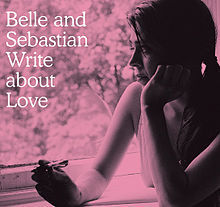 A few songs in, Murdoch bounded into the audience, asked the crowd who had the worst day. The winner would get to pick the next song. A bespectacled, Smiths-y looking guy in front of me talked about being dumped by a girlfriend who exchanged him for his best friend (I think I have that right), and then requested the strummy “Piazza, New York Catcher.”
A few songs in, Murdoch bounded into the audience, asked the crowd who had the worst day. The winner would get to pick the next song. A bespectacled, Smiths-y looking guy in front of me talked about being dumped by a girlfriend who exchanged him for his best friend (I think I have that right), and then requested the strummy “Piazza, New York Catcher.”
The group originated during a seven-year-stretch of Chronic Fatigue Syndrome by Murdoch; he emerged from it thanks to music and church-going. A school assignment led to his forming a band and recording Tigermilk, which became the first B&S record, released in a very small batch in the UK and then, after the group found fame, a few years later in the US.
The tension between Murdoch’s introversion (I bumped into him briefly before the show) and the group’s communal cheer is part of what makes their performances so complex and resonant. He really gives of himself onstage; you feel a kind of conspiratorial thrill just being there.
So overall, this was as good a show as I’ve seen this year, and it’s always reassuring when a band you love plays with commitment and freshness a decade and a half after starting out. Caveats: I would have liked to hear more of Jackson’s reverb-drenched guitar. I also would have loved to hear some of my favorites — Lazy Line Painter Jane, The Blues Are Still Blue, I Want the World to Stop. (Like Wilco, they have so many good songs they can play a full set and leave a bunch out.)
The two or three new songs they played seemed to me mixed; maybe I’m still adjusting to them and to their less guitar-based sound. And no man should go onstage with a keytar. (I am just glad that Murdoch, who joked with Jackson about his love for Lionel Richie’s All Night Long, did not break into the Miami Vice Theme.)
The encore was Get Me Away From Here, I’m Dying. By that point, I was really wishing I could come back for Tuesday’s show. They are Britain’s greatest band, I think, and remain an absolute delight live. I’d had a shitty few days — including having my car totaled thanks to an incompetent driver — but left feeling benevolent and lucky to live in the same world as Belle & Sebastian.
October 6, 2014
The Origins of the Creative Impulse
WITH the release of my book getting close, I’m going to start salvaging some of the great epigraphs that helped me tell the story — in some cases, the history or even prehistory — of the creative class. These, then, are other people’s words which helped me to explain things, but which I lost in the edit.
Here is the first, from the wonderful book by the late philosopher and journalist Denis Dutton.
The evolution of Homo sapiens in the past million years is not just a history of how we came to have acute color vision, a taste for sweets and an upright gait. It is also the story of how we became a species obsessed with creating artistic experiences with which to amuse, shock, titillate and enrapture ourselves, from children’s games to the quartet
s of Beethoven, from firelit caves to the continuous worldwide glow of television screens.
Denis Dutton, The Art Instinct: Beauty, Pleasure, and Human Evolution
I’m hoping these quotes lead people to think more deeply about the subjects or to check out the source materials. I don’t always agree with the people I quote on every subject — Dutton’s politics are very different from mine, for instance — but I find them smart of provocative.
October 5, 2014
David Mitchell’s “The Bone Clocks”
I’M not sure there’s a novelist alive whose work I look forward to more than David Mitchell’s. I say this even while sharing some mixed feelings about his new novel. The parts of this that work — four and a half of its six parts — are simply spectacular. In fact, I can’t think of two many writers of any kind whose storytelling is so rich and engaging. The guy is simply unbelievable.
In any case, I spoke to him recently — asking him to describe his creative process and to address his critics — and led off my interview this way.
I just finished “The Bone Clocks,” and I’m thinking about your storytelling. You seem like the kind of jazz musician who can go up and play chorus after chorus after chorus without breaking a sweat. Is storytelling easy for you? It seems to be like a melody that just keeps unfolding.
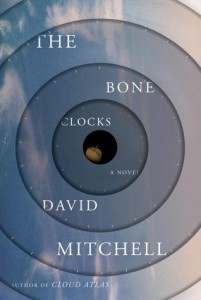
Oh, thank you. Bless you. I sweat. I think all jazz saxophonists do. It’s also my job to conceal the fact that I’m sweating, and for that to be gone by the time it reaches the reader. So yeah, I go wrong and I go down blind alleys and bark at trees and follow red herrings. But I have to fix what goes wrong and rewrite and disassemble and re-assemble so that by the time it reaches your hands, it looks effortless. But no, it isn’t.
Regarding reviews of The Bone Clocks, my point of view is close to Pico Iyer’s in the New York Times Book Review, with a bit of Laura Miller’s Salon take mixed in. (Unlike Laura, I did not think one hysterical section was enough to ruin the entire novel.) Even with the slight stumble, I can’t wait to see what he comes up with next.
October 3, 2014
Richard Linklater’s “Boyhood”
IT would give me a contrarian thrill if I could come out against what may be the best-reviewed movie of the year. But Boyhood, which I finally caught up with, struck me as the most profound film I’ve seen in years.
The New York Times review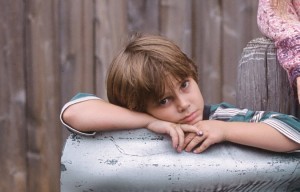 , by my friend Manohla Dargis, caught a hint of the movie’s poetry.
, by my friend Manohla Dargis, caught a hint of the movie’s poetry.
The realism is jolting, and so brilliantly realized and understated that it would be easy to overlook. In “Boyhood,” Mr. Linklater’s inspired idea of showing the very thing that most movies either ignore or awkwardly elide — the passage of time — is its impressive, headline-making conceit. Starting in 2002, he gathered his four lead actors each year for a three- to four-day shoot, working on the script as they went along. (The consummate anti-slacker, Mr. Linklater also shot during that period a clutch of shorts and features, including “Before Sunset,” the second in a trilogy of films with Mr. Hawke; a fictional adaptation of “Fast Food Nation”; and a weirdly touching comedy about a murderer, “Bernie.”)
What emerged from those dozen years is a series of meticulously textured and structured scenes set to the rhythm of life. The structure is crucial. Mr. Linklater has long experimented with nontraditional narratives, from the baton-relay form of “Slacker,” in which he leaves one character to follow the next, to the peripatetic ramblings of his “Before” trilogy. His films are sometimes mischaracterized as having no plot, perhaps because they may seem so, when compared with aggressively incident-jammed mainstream movies. One of the fascinating things about “Boyhood” is that a lot happens — there are parties and fights, laughter and tears — but all these events take place in a distinctly quotidian register and without the usual filmmaking prodding and cues.
I’ve got some thoughts on the film and will try to get into them over the next few days. Among them: Linklater, who I had lunch with around the release of Waking Life, is nearly as good as fellow director Quentin Tarantino at choosing music for his films. Also, when Mason’s voice changes, out of the blue, the shock is almost violent.
October 2, 2014
Are We Really in a Gutenberg Moment?
OFTEN these days, we hear that the shift from the analog world of print to the online and digital world resembles what happened when Gutenberg’s printing press reshaped Renaissance Europe, crushing Catholicism, spreading literacy and perhaps democracy, and overturning old ways. People who frame our current transition this way often do it as a way of arguing for the “liberating” powers of the Web.
I want to go back to Michael Harris’s The End of Absence, which I’m reading now. Harris refers to the Victor Hugo novel Notre-Dame de Paris, in which a 15th century archdeacon picks up a printed book for the first time, looks from it to Notre Dame and says, “Cecil tuera cela” — this (book) will kill that (cathedral). Of course, the printing press helped marginalize Catholicism in northern Europe, and had an enormous impact everywhere print traveled.
But the pace of change is very different. Here’s another bit from Sara Scribner’s Salon Q+A with Harris.
You talk a lot about this being our Gutenberg moment, and that we’ve had big, sweeping technological changes before when the printing press came in, and this is just one of them. And people say, “Don’t panic.” This is just another transition period. But how is this rapid technological transformation different than others?
It’s different, because this is a moment and not a slowly booming era. In Gutenberg’s day, in 1450, the printing press comes out, but most people aren’t actually literate until the 19th century. So you actually have hundreds of years of slow change. It takes centuries before the printing press’s real power is unveiled. Whereas the amount of massive change happening to
day takes place in a single generation. So instead of a Gutenberg era or a Gutenberg shift, we have this Gutenberg moment, is what I called it in the book. And in a way, that’s frightening, but in another way, it’s actually hopeful, because it means you actually have people living on both sides of the moment at the same time. So I think anybody born before 1985 can remember being an adult in a pre-Internet world. So we have this great chance to actually talk with people who are younger about the world that was before. It doesn’t mean that that world was better than their world. In a lot of ways, digital natives may have an exciting, fantastic new experience that we can’t, that older people can’t comprehend. But the exciting thing for me is the fact that we could actually have a conversation between those two generations and that we had such massively different experiences.
Others, such as Neil Postman and Sven Birkerts have written well on the subject, and Harris stands proudly in their tradition of humanistic skepticism.
October 1, 2014
Where Does the Creative Class Go After Brooklyn and Berlin?
RECENTLY we’ve been hearing that artists and writers are being priced out of Brooklyn, and the search for “the new Berlin” — an affordable city for creatives — is on. (Krakow? Vilnius?) And is Portland getting better, or worse? A number of stories have tackled the issue from different angles. (It all reminds me of the Talking Heads song, “Cities.”)
This piece from the New Republic takes the long view.
This way of talking about cities—“up-and-coming,” “cool,” “over”—is partially the result of a rash of neo-liberal reforms that have had a deleterious effect on the way we think about cities over the past two decades. “From the 1980s onwards, national governments pulled investments from cities, and they’ve been needing to compete for investment, jobs, and media attention,” says Jamie Peck, a professor of geography at the University of British Columbia. This means that cities—spurred on by globalization and Richard Florida’s highly contested claimthat the key to urban regeneration is to attract a “creative class”—are now engaged in an aggressive war for buzz and attention.
The Thomas Rogers’s story continues by noting: “Berlin isn’t the only city trying to sell itself as ‘poor but sexy.’ In the past several years, cities ranging from Detroit to Durham have been hoping to rebrand themselves as ‘creative hubs,’ whether or n ot that label has any bearing on reality.”
ot that label has any bearing on reality.”
This dynamic — the move of creative types into a city or neighborhood, and their eventual ejection after the place becomes too expensive — is something we’ll be talking about, and struggling with, for a long time to come.
Poet Dana Gioia Endorses Culture Crash the Book
NOTORIOUS to some, beloved by others, the California poet has this to say about Culture Crash, my upcoming book:
Scott Timberg has written an original and important study. He explores some of the most pressing cultural issues affecting the arts and intellectual life with remarkable clarity. This is the first analysis of our current culture from the bottom up — the precarious situation of the individual artists, writers, and musicians who are now struggling to survive.
Dana may be best known as a recent chair of the National Endowment for the Arts, but he’s also a poet, an important/controversial critic — his Can Poetry Matter? is an essential w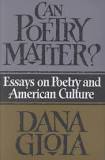 ork — and recently, USC professor.
ork — and recently, USC professor.
Whatever you call him, I’m very glad to have Dana on the jacket of Culture Crash, which Yale University Press releases in January.
From our Department of Self-Promotion
September 30, 2014
Have We Lost the Ability to Be Alone?
A COUPLE of decades into it, we’re still figuring out what the Internet is doing to us, as individuals and as a society. A fascinating interview with the author of a new book, The End of Absence, get at this in a nuanced way.
Author Michael Harris gets at the difference between the digital era and the age of Gutenberg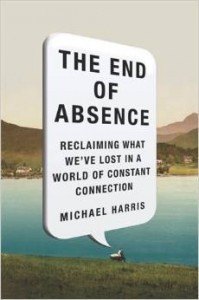 , the importance of solitude and contemplation, what’s happening to our memories, and the value of “fasting” from the Internet. He refers to the Internet taking us back to “stereotypically adolescent frame of mind where you’re constantly hoping for the approval of others instead of finding it from your own heart or own sense of self.”
, the importance of solitude and contemplation, what’s happening to our memories, and the value of “fasting” from the Internet. He refers to the Internet taking us back to “stereotypically adolescent frame of mind where you’re constantly hoping for the approval of others instead of finding it from your own heart or own sense of self.”
(I love this interview not only because the interlocutor is my beloved wife.)
Here’s one of the exchanges in the piece:
A lot of people — when they hear people talk about their fears about technology and where we’re headed and what it’s doing to our sociology and what it’s doing to our lives, some people will respond, “It’s just a tool. I don’t understand what’s the problem.” That feeling that like, “We’re in control. The computer’s not in control, so why are you freaking out about this stuff?”
A couple of people while I was working on the book have called me a Luddite, but I think people who use that word “Luddite” actually don’t know what a Luddite is, because if you look at what the Luddites really were historically, they weren’t so much anti-technology as they were pro-human. They were actually fighting for workers’ rights at an age when mechanical tools were being used by a manufacturing elite to really trample human rights. So I feel like I am in the Luddite position in that truer sense, because it isn’t about technology good or technology bad, and I would never take that stance. It’s just technology is a dangerous, beautiful tool that we have; you’re right. And we need to become intelligent about the way that we use those tools. I think that we’ve gone through this very giddy ride of absorbing new communication technologies, and what we’re hitting now is a point where we have to start becoming intelligent about our media diets in the same way that we had to become intelligent about our food diets after we got a super abundance of sugar and fats at our disposal.
Looking forward to reading Michael Harris’s book.
September 29, 2014
The Pixies and Cat Power at the Hollywood Bowl
WELL, the Bowl’s 2014 season ends with a show a lot of us had looked forward to for a long time. The Pixies are a band from the George H.W. Bush administration — from before the indie-rock boom inaugurated by Nirvana’s Nevermind — and they’ve been tighter and more taught since their reunion. Their Bowl debut, then, did not take much time selling out its nearly 18,000 seats.
And the Pixies — mostly indifferent and sometimes contemptuous when the played live during their original run — lived up to expectations last night. We expected them, I think, to play hard. What surprised me were two things.
First, for every Gen Xer pumping his first at the band’s (college-radio) hits, there was a Millennial dancing or shouting along as if these anthems were written for her, too. 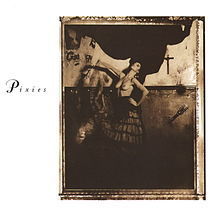
Second, in a set dominated by old “classic” Pixies, despite the band recording some new material lately, I was struck by how many songs — from openers “Bone Machine” and “Wave of Mutilation” to “Nimrod’s Son” and “Debaser” to set closer “Where is My Mind” — these guys penned that sound like indie-rock keepers. Has any band that released only a total of five EPs and albums turned out so many great, memorable songs — which sound even better and just as mysterious as they did a quarter century ago?
The band’s blend of surf music and surrealism was evident in its first release, Come On Pilgrim, a mini-Lp or EP, released 27 years ago last night. So it was only fair they played a lot of early stuff. Needless to say, the Pixies — especially their loud-quiet-loud dynamics — were a major influence on Nirvana. So in the sense they are among the godfathers of ’90s indie, though they sputtered and then broke up before it really got going.
The Pixies recently lost its bassist and founder, Kim Deal, who had a history of tension with singer Black Francis. We missed her vocal harmonies; on some songs, we missed them a lot, though the new bassist may grow into her role. The one-song encore also showed the band’s old smug indifference. (Would we have felt disappointed without it?)
The opener was Cat Power, the elusive chanteuse Chan Marshall (right). She is a far more confident and physical performer than I recall from the ’90s; she’s been notorious for stage fright and meltdowns but seems to have pulled herself together.
Despite wearing an unfortunate plaid shirt (a grunge reference?) that was at least two sizes two big, Marshall and her tough band put her songs across powerfully. I miss the intimate side of Cat Power, but that’s hard to summon at the Bowl. At least one song last night came from her The Greatest LP, which may be the finest record of whatever year that was. The best female voice in indie rock? Quite possibly.
And I’m glad to say while I’m sure Marshall is under a lot of pressure these days to act “normal,” she offered a very sweet, disjointed rant near the end of her set which reminded me that she’s still in her own world. Long may her freak flag fly.
By contrast, Gogol Bordello — a band a lot of my smart, musically serious friends really like, especially live — left me entirely cold. Many call their accordion-driven music “gypsy punk” — last night they seemed more like an Eastern European version of Red Hot Chili Peppers, bare male chest included. Sure, they had a lot of energy, but every song had identical emotional content — goofy, macho bluster compared to the nuances of rage and loss and disappointment and affection and paranoia and everything else Cat Power and the Pixies offered. (Some of the crowd, needless to say, loved it.)
My friend and I we so disengaged we took a walk around the Bowl during one of Gogol’s song. When we got back to our seat, they were still pumping out the same endless number. Or maybe it just sounded that way.
Lucky for us, and the other 17,000-plus in the audience, the Pixies and Cat Power offered strong, moving sets — and left us sad that the season at what may be L.A.’s bet venue has drawn to a close.
Philip Roth, Le Guin Take on Amazon
WRITERS and artists are notoriously difficult to corral; it’s both built into the job description and something that keeps the creative class from asserting itself. But lately a number of scribes have united in an effort to resist the bullying of the online bookseller.
The New York Times reports :
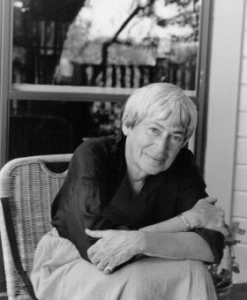
Photo by Marian Wood Kolisch
Now, hundreds of other writers, including some of the world’s most distinguished, are joining the coalition. Few if any are published by Hachette. And they have goals far broader than freeing up the Hachette titles. They want the Justice Department to investigate Amazon for illegal monopoly tactics.
They also want to highlight the issue being debated endlessly and furiously on writers’ blogs: What are the rights and responsibilities of a company that sells half the books in America and controls the dominant e-book platform?
The agent Andrew Wylie, who was opposing Amazon before it was cool, has enlisted his clients Philip Roth, Salman Rushdie and Orham Pamuk in the fight.
And one of my favorite writers, Ursula K. Le Guin (right), has come out very decisively on the issue.
Ms. Le Guin, author of “The Left Hand of Darkness,” the Earthsea series and other award-winning works, will be presented her medal by Neil Gaiman, a regular attendee at the all-expenses-paid Campfire weekend for writershosted by Jeff Bezos, Amazon’s chief executive. She has strong feelings about the Amazon-Hachette dispute.
“We’re talking about censorship: deliberately making a book hard or impossible to get, ‘disappearing’ an author,” Ms. Le Guin wrote in an email. “Governments use censorship for moral and political ends, justifiable or not. Amazon is using censorship to gain total market control so they can dictate to publishers what they can publish, to authors what they can write, to readers what they can buy. This is more than unjustifiable, it is intolerable.”
CultureCrash is delighted with the rare sight of artists banding together to fight and protect their own ecosystem. Is it enough to make a dent in what’s essentially monopoly capitalism? We’ll keep watching.
Scott Timberg's Blog
- Scott Timberg's profile
- 7 followers



